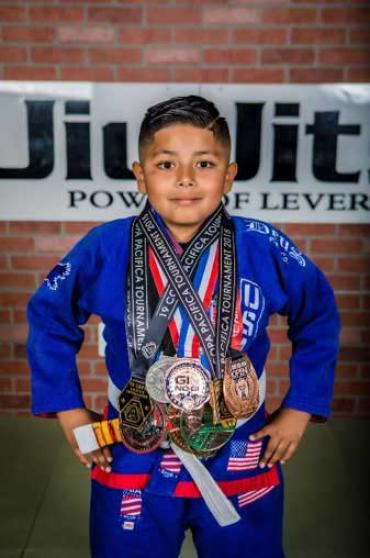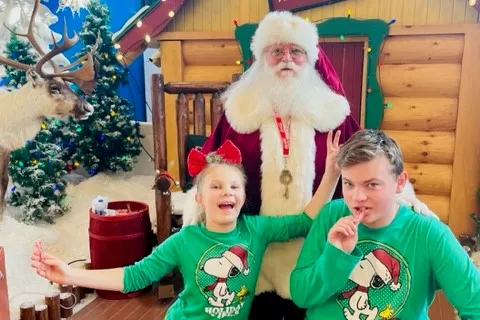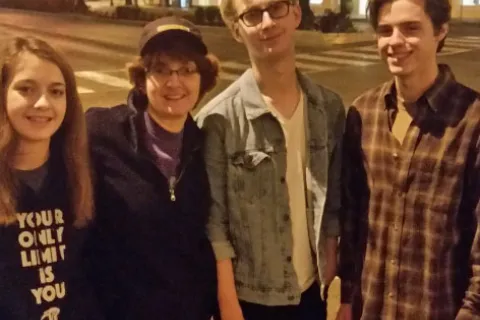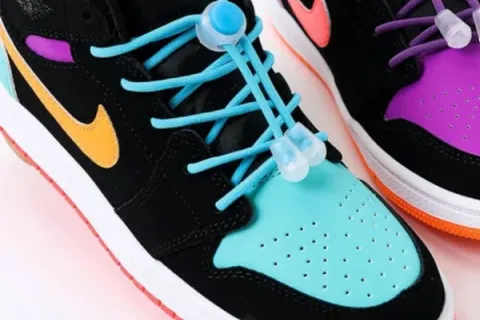Spanish resources help bilingual families in the autism community overcome language barriers
While she was waiting for her son’s autism diagnostic appointment, Berlina Felipe did her research. She had a year during that wait, reading about what to expect and how to plan supports for her son, Alex.
“When he did get diagnosed at age 4, even though I was already prepared, it was still hard,” Felipe said. She found the amount of information provided by her son’s providers overwhelming – and not in her native language.
Although she is bilingual, Felipe had some trouble understanding the dense English handouts and some unfamiliar words. But her husband had an even bigger hurdle because his English fluency is not as strong as hers.
To help bridge the language barrier, their son’s providers at University of California-Irvine’s Center for Autism and Neurodevelopmental Disorders (CAND) offered the Felipes several of the 24 Autism Speaks tool kits that have been translated into Spanish.
“In addition to the language translation, the Spanish versions of the tool kits are also adapted to be culturally appropriate,” said Donna Murray, Vice President of Clinical Programs at Autism Speaks.
For example, photos or images in the tool kits are typically changed to reflect the community and culture where they will be used.
The Spanish tool kits became a bridge for Gaby and Pedro Velasco to reach out to their extended family. They are both bilingual, but their parents speak only Spanish.
Gaby’s family, in particular, had a hard time accepting it when their son, Jair, was diagnosed with autism at 25 months. Like many people with little exposure to autism, Gaby’s mother thought poor parenting was causing his behavioral issues. Through the resources and classes at UC-Irvine, offered in her native language, she learned about how autism affects children like Jair.
“Having those resources integrates families who may not know the language. It helps them understand that they are not alone, and that there are other people in a similar situation, and for extended families to understand what they are going through at the same time,” said Pedro. “It has created a powerful village because we have brought it together for our community.”
Berlina and her husband also attended the English version of the center’s Autism 101 class, which uses the 100 Day Kit for Newly Diagnosed Families (Manual de los 100 Días), but her husband wanted to get even more out of the tools. He wanted to be able to ask questions of the specialists and instructors in his own words.
So, they suggested holding the class in Spanish – and from the first five families who have attended, the class now has as many as 50 families wanting to get a spot. Both of Jair’s grandmothers, who took care of him when he was young, attended the Spanish classes as well to learn how to support him.
“Years later, my mom told us she is so glad that we got all the early intervention,” Gaby said. “And that we never gave up.”
The Felipe and Velasco families were invited to help start a Latino Family Advisory Council for the UC-Irvine center, which is one of the 12 autism centers in North America that participates in Autism Speaks Autism Treatment Network (ATN).
Under the Latino FAC’s guidance, the center now offers many of their classes and resources in Spanish. Based on participant feedback, they also sometimes separate dads and moms into two groups to encourage each group to talk more openly.
Alex’s family made sure to learn from his providers and school contacts how to help him at home beyond his speech and occupational therapy sessions.
“We work as a team,” Berlina said. Part of Alex’s team makeup is also his jiu-jitsu training, which has helped him get comfortable with others touching him, looking others in the eye and being more social as he helps other kids in class.
In addition to the resources at the center and in their community, Berlina said the Sesame Street muppet Julia, who has autism, has helped her talk with her son and his younger sister about his autism.
“He says, ‘She has autism like me!’” Berlina said. And she was able to show a video of Julia to her daughter and say, “This is what your brother has. This is why he is different.” She said it has helped her daughter be able to advocate for her brother when others don’t understand him.
The Velascos are helping Jair, who is now 13, learn to be as independent as possible. They often remind him that “the sky is the limit,” and to “shine like a star.”
Jair has big goals for his future: when he is old enough, he wants to be a barista at Starbucks. In fact, this year at Halloween, a holiday he never really enjoyed before, this goal inspired him to proudly wear a Starbucks barista costume to enjoy the night. Eventually, Jair wants to become an engineer.
Now that Alex is 9 and doing well in third grade, Berlina is again doing her research about what to expect in the next phase of life as he approaches the teen years. She hopes to find more Spanish-language resources available to help her family make the transition from elementary to middle school. And as a member of the ATN site’s Latino FAC, she expects to continue to help other families like hers.
“I’m part of the ATN, too, and I feel like the work that Autism Speaks is doing is awesome,” Berlina said. “For me and my husband, this is our way of making a difference.”









